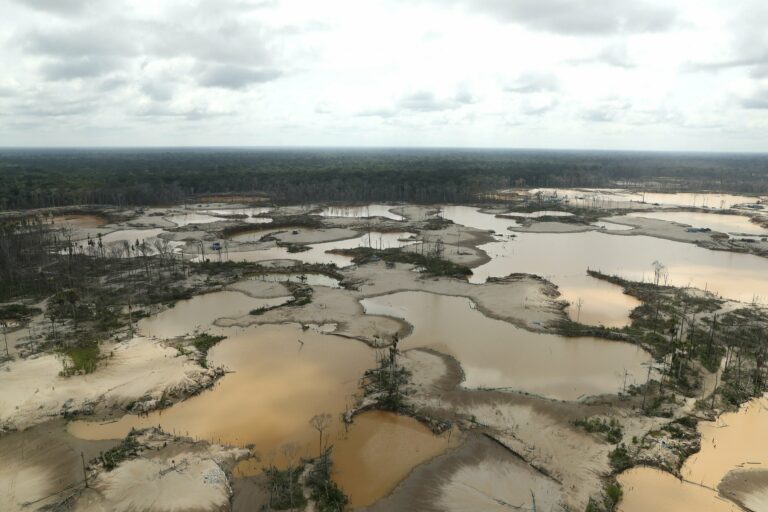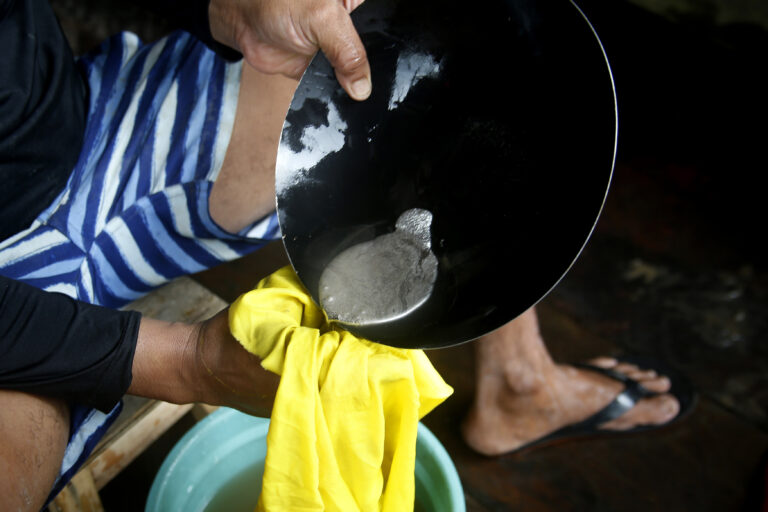- High prices and weak oversight have turned Mexico into one of the main suppliers of mercury for gold mines across Latin America, according to an Environmental Investigation Agency report.
- Despite signing an international treaty to combat mercury production, Mexico continues to struggle with mercury smuggling to countries like Colombia, Peru and Bolivia.
- Mercury mining has attracted the interest of criminal groups like the Jalisco New Generation Cartel, and today occurs in the states of Zacatecas, San Luis Potosí and Querétaro.
MEXICO CITY — In 2017, as part of an international treaty, Mexico started phasing down mercury production and eliminating its use in gold mining, citing major environmental and public health hazards. The effort appeared to work: Between 2017 and 2018, the government reported that national mercury production had dropped from 442 metric tons to just half a metric ton. Over the following three years, it reportedly dropped to zero.
But for some environmental groups, those numbers looked too good to be true. The government wasn’t reporting mercury smuggling during those years, they said, and had even left several key sections of its progress reports blank. Ultimately, the government would have to issue a correction to some official figures, clarifying that mercury was still being produced in the country.
Today, mercury production persists in several states across Mexico, including in protected areas, and has turned the country into one of the main suppliers for the mercury used in gold mines across Latin America.
“Mercury mining production is spinning out of control, with bursts of activity driven by mercury prices, increased violence and an alleged recent takeover of productive mines by a drug cartel,” the Environmental Investigation Agency (EIA) said in a recent report.

Mercury is considered one of the top 10 chemicals of major public health concern by the World Health Organization. Once released into an ecosystem, it can pollute soils and streams for decades, even centuries. Miners dispose of it in the water or burn it off to help separate gold particles from the soil.
To fight mercury use, more than 100 countries have ratified the Minamata Convention, the treaty Mexico signed in 2017. But fulfilling the goals of the convention has been challenging. With more countries banning mercury exports, Mexico has emerged as a main global supplier along with China and Indonesia, according to the U.N. Human Rights Council. A spike in mercury prices — now around $330 per kilogram — has revived interest in the market, prompting more sophisticated smuggling tactics and drawing in criminal groups like the Jalisco New Generation Cartel (CJNG).
Around 38 of the 54 mercury sources linked to human activity worldwide are located in Mexico, the National Institute of Ecology and Climate Change (INECC) estimated in 2018. Between April 2019 and June 2025, Mexico produced around 200 metric tons of mercury for shipment to Bolivia, Colombia and Peru, to be used in small-scale and illegal gold mining sites.
In the same period, the EIA identified 50 mercury shipments from Mexico: 37 going to Peru, 10 to Colombia and three to Bolivia. All three countries have ratified the Minamata Convention but still struggle to implement the regulations.
The problem could continue to grow, the EIA’s investigation suggests, as Mexico experiences “mercury fever.”
INECC didn’t reply to requests for comment for this story.

“The contribution of mercury releases and emissions of mercury from the small-scale gold mining sector has continued to grow with grave consequences for millions of miners, vulnerable women and children, Indigenous peoples, ecosystems and aquatic life,” a 2022 U.N. report said.
Some mercury mining occurs in the states of Zacatecas and San Luis Potosí. But most of it is done in the state of Querétaro, in central Mexico, where between 700 and 1,000 people reportedly work in more than a dozen mines. The mines there have a potential production capacity of more than 100 metric tons annually, according to INECC, which means the state may have one of the largest mercury reserves in the world.
Several of the mines are located inside Sierra Gorda Biosphere Reserve, a 383,567-hectare (947,815-acre) UNESCO World Heritage Site. Some of them are controlled by the CJNG, one of Mexico’s strongest criminal groups, which has led to “soaring” production, according to the EIA report.
Smuggling the mercury out of the country involves falsely declaring bags of mercury-rich gravel as “construction material” or “decorative stones,” according to the EIA report. These are shipped among dozens of identical bags of regular gravel out of Manzanillo, Colima state, on the Pacific coast, and Veracruz, on the Caribbean.
The National Customs Agency of Mexico and the Ministry of Environment and Natural Resources didn’t reply to requests for comment for this story.
This month, Peruvian officials carried out a record-breaking seizure of smuggled mercury-rich gravel, which they said could have been processed into 4 metric tons of liquid mercury. The cargo originated in Mexico and was on its way to Bolivia.
“We are facing an environmental crime, which requires maximum efforts to ensure the right of every person to a healthy and sustainable environment,” Marcos Orellana, the U.N. special rapporteur on toxic substances and human rights, said in a 2022 statement. “A global ban on the use and trade of mercury in small-scale gold mining will not, on its own, end the problem.”
In its report, the EIA said the Mexican government needs to take immediate action to regain control of mercury mining territories in Querétaro and investigate the trafficking networks run by criminal groups. It says an effective phase-out can be achieved by the end of 2025, with a “socio-economic transition” for communities that have historically relied on the mines.
Officials also need to increase strategic collaboration with their counterparts in Colombia, Peru and Bolivia to combat mercury smuggling, the report said.
“Mercury should be treated as what it is: a highly toxic catalyst of convergent crimes including human rights violations, arms trafficking, drug trafficking and illegal natural resource extraction,” the report said.
Banner image: Miners work at a legal mining concession in Huaypetue, Madre de Dios, Peru. (AP Photo/Esteban Felix)
See related from this reporter:
Mexican government looks to correct Tren Maya environmental damages
FEEDBACK: Use this form to send a message to the author of this post. If you want to post a public comment, you can do that at the bottom of the page.






